When it comes to sustainable fabrics, linen is essentially the talk of the town. From shirts to sheets, most of these items are referred to as ‘linens.’ It’s simply because the linen fabric has a long history in the sustainable fabric market, but is it actually sustainable? Or is it just one of those fabrics thought with being sustainable? Let’s find out.
What is linen fabric?
Linen is a lightweight yet incredibly strong fabric made from the flax plant. The Latin name for flax, “linum usitatissimum,” is where the word ‘linen’ comes from. Linen is a natural fiber, but it takes a longer time to harvest and be turned into usable fabric. This is because flax fibers can be difficult to weave. Linen fabric is a popular term in the fashion industry today as it is practically used everywhere from towels, napkins, and bedsheets to even clothing now!
How is linen fabric made?
The rise of this fabric owes a lot to linen’s sustainability. The fibers of lovely blue-colored flax plants are used to make linen, much like they are for bast fibers. To soften the fibers, the plant’s threads are removed and kept in storage for long periods.

Machines are used for sowing flax seeds after planting, and the seeds are picked till they turn yellow.
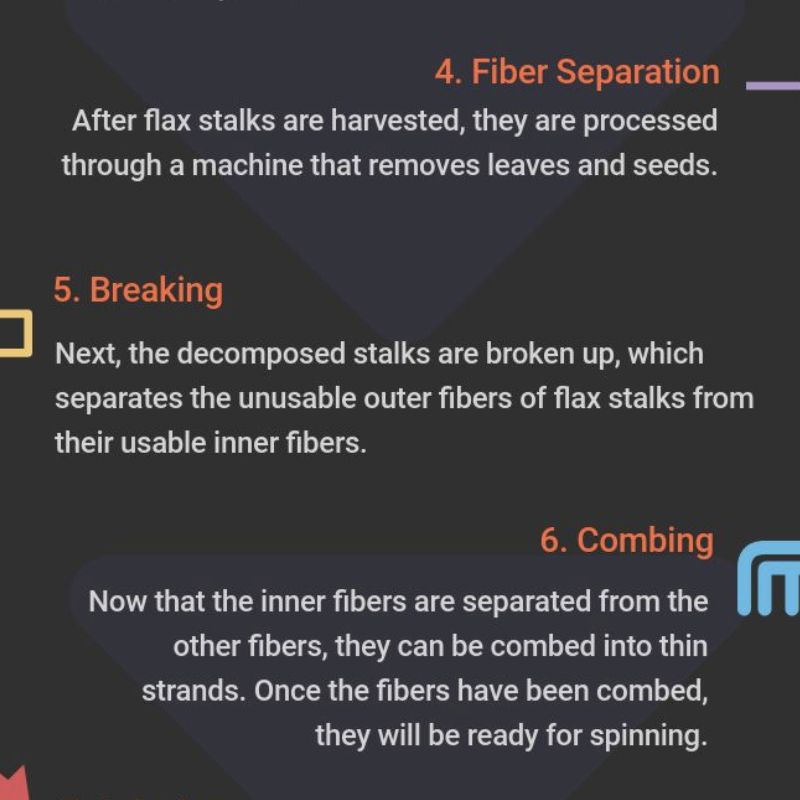
The decomposed stalks are broken down, and the fibers are separated. The next two steps in making this flax fiber useable are combing and spinning.

After the yarn has been dried and reeled, it is then wrapped onto bobbins. The thread is now ready to be used in your favorite linen home products and clothes.
Benefits of linen fabric
Linen fabric uses the least resources the planet has blessed us with. It is made from the stalks of flax plants, a resilient species that can thrive, even in unfavorable soils, with little to no fertilizer. Linen manufacturing is significantly less water-intensive than cotton production, resulting in a lower water footprint when it comes to linen vs. cotton.
Almost all flax plants can be utilized; with the growing demand for flax seeds and oils in the health food industry, there is little to no plant wastage. Additionally, despite being a natural fiber, it is biodegradable. You can also rest assured that your linen clothing will last much longer as it’s highly durable!
Drawbacks of linen fabric
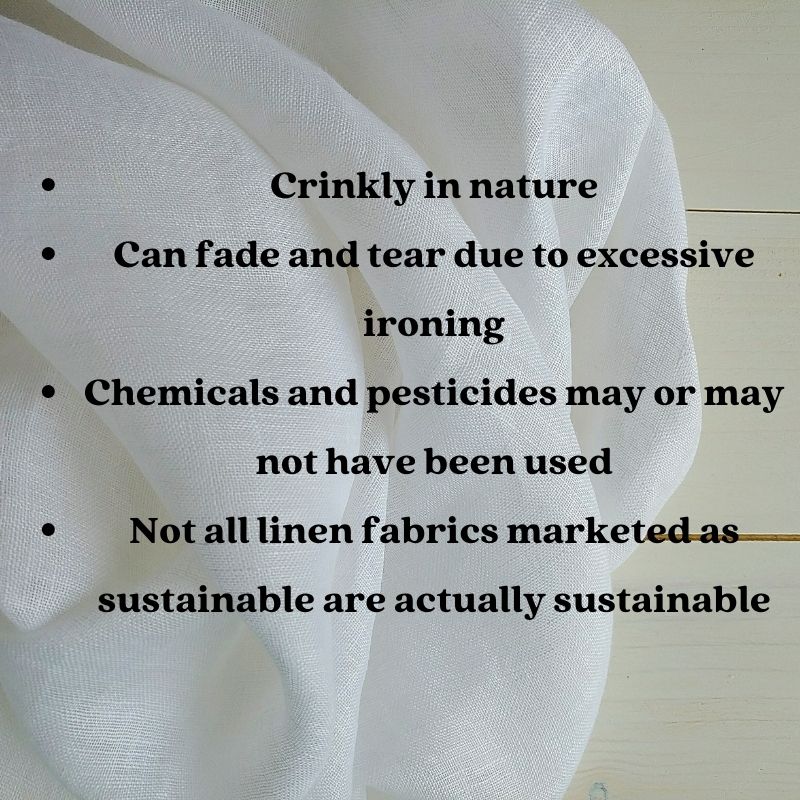
There are two sides to every story, and linen is no exception. It is pretty crinkly, so ironing is required unless you want to go for the wrinkled aesthetic. However, you should be prepared for color fading and tearing of the organic linen fabric, which can be caused by frequent creasing in the same area. Although linen is considered an eco-friendly textile, it loses its qualities when dyed extensively. This occurs when a heavy bleaching treatment is needed due to the dense nature of the fiber, for pure white linen.
Even when you buy organic linen fabric, there’s practically no guarantee that chemical dyes aren’t being used. Furthermore, there is no hard and fast rule that no fertilizers or pesticides are used in producing the linen fabric. However, compared to other crops, linen typically requires fewer pesticides, but only if the product is GOTS-certified.
So, if you’re looking for clothes with linen sustainability, check for organic certification or brands that let you dress guilt-free.
Why choose linen fabrics?
Given its capacity to wick away moisture and regulate body temperature, linen’s sustainability is a highly regarded quality. Also, it’s no surprise that linen clothing is becoming more popular as the temperature heats up. It is because organic linen fabric helps to retain heat in the cold and keeps the wearer cool in the heat. This makes it an extremely durable and versatile fabric for intense summers and freezing winters. In addition to being incredibly breathable, linen cloth is naturally antibacterial, making it a popular choice for bandages. Regarding linen vs. cotton, linen’s sustainability is greater as it can hold dye colors better than some other fabrics.
So, how sustainable is linen?
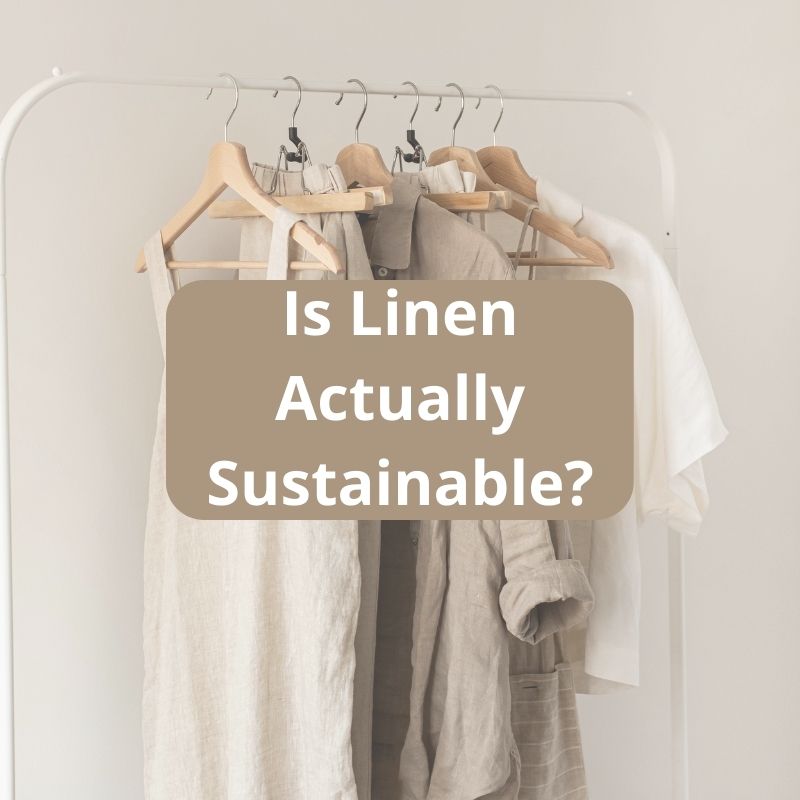
While many people have shifted to vegan footwear and organic food, it’s time to consider what we wear as well. Considering fast fashion is one of the garment industry’s biggest problems, choosing organic linen fabrics is advantageous since they last longer. And since linen fabric is one of the oldest in the industry, you can always count on it. Furthermore, according to the European Confederation of Linen and Hemp, flax cultivation is good for the environment. And the best part? Even though linen is intended for the landfill, it does not add to it is completely compostable.
So, of course, linen is entirely sustainable, and our favorite plant is the flax plant for its sustainability. It is one of the most sustainable plants on the planet. But like any other fabric, linen’s sustainability depends on various factors. So, a lot goes into deciding if the final linen fabric is sustainable, from pesticides used even before the production to brands’ being non-transparent about their practices.
Best sustainable linen brands for you
With many slow fashion brands trying to ace their sustainable clothing game, here are three linen brands that are worth checking out.
1. MATE The Label
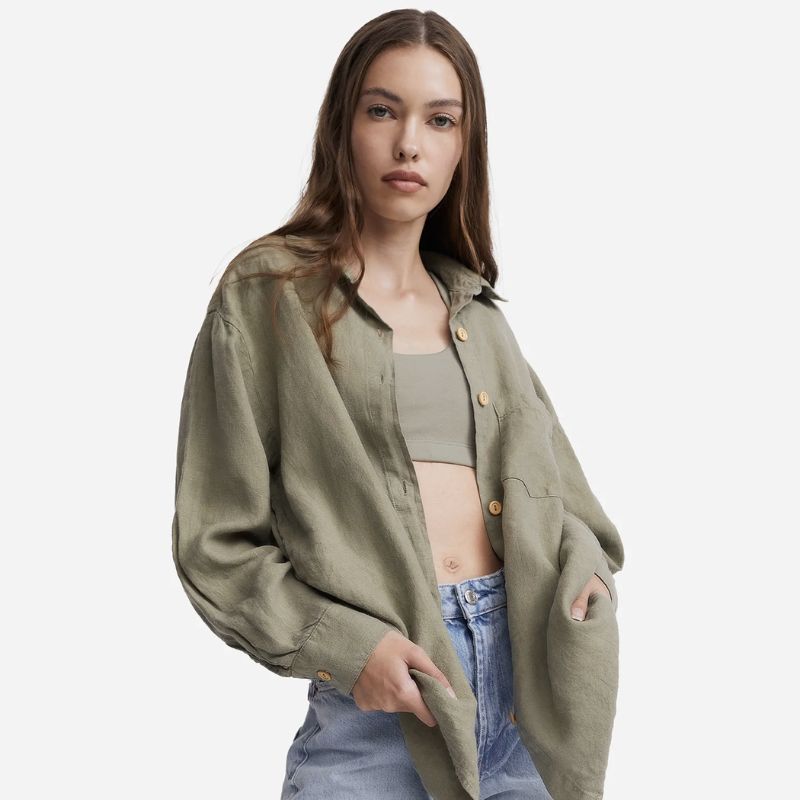
With GOTS-certified organic textiles and low-impact dyes, this sustainable clothing brand makes basic, clean apparel. We appreciate the company’s commitment to providing everyone with access to equally beautiful and sustainable products. So, shop for sweatshirts and tanks at MATE, a US company producing locally to reduce its carbon footprint.
2. Neu Nomads
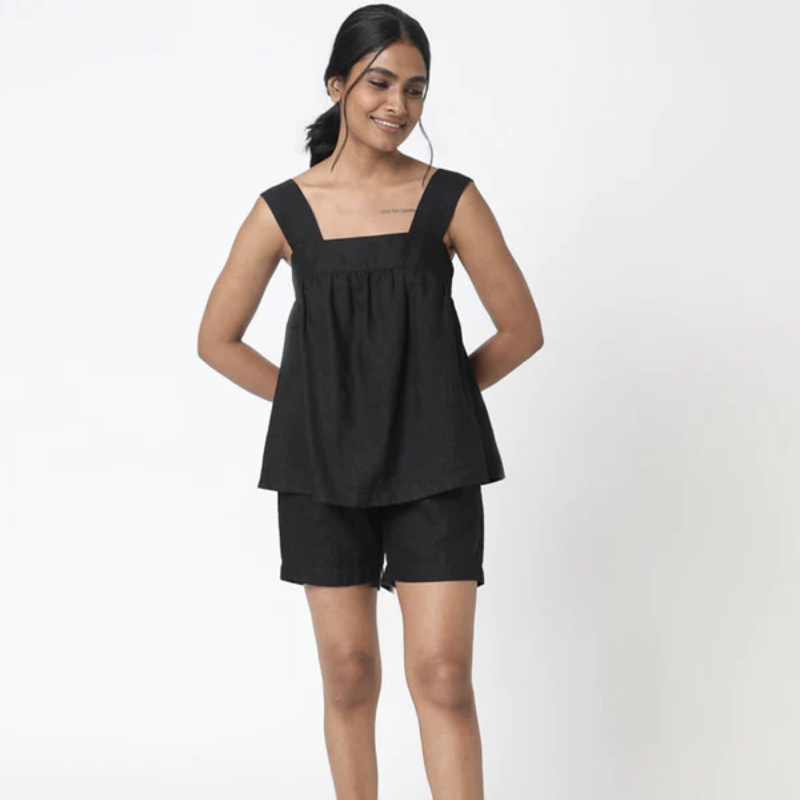
This is a Brooklyn-based sustainable women’s clothing brand that carries everything from dresses to loungewear! Being a female-owned and operated company, it strives constantly to produce linen clothing with no negative footprint on the planet.
3. Eileen Fisher
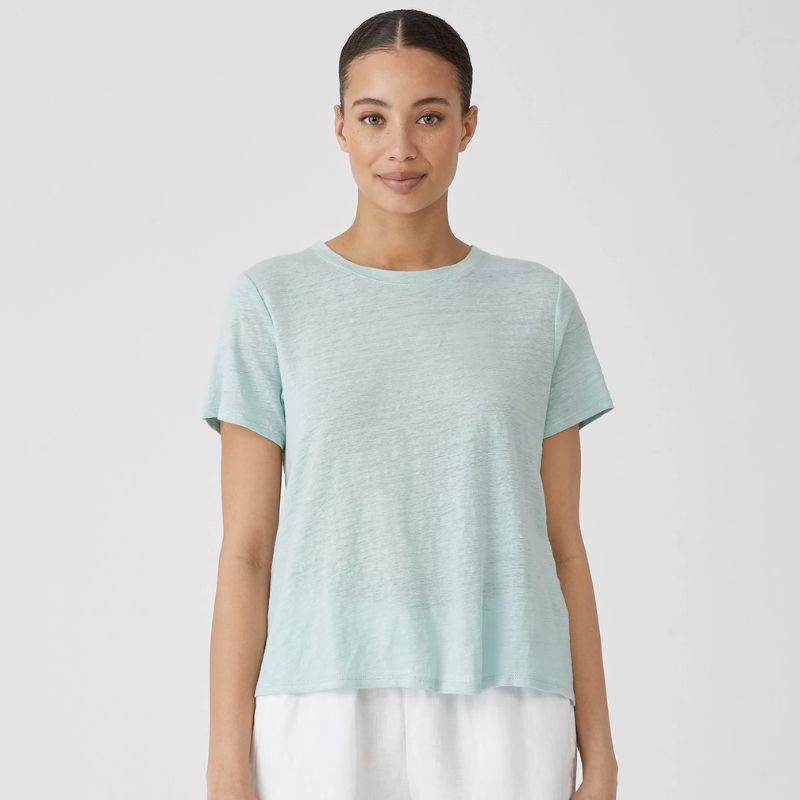
One of the best in the slow fashion industry, this brand offers simple, stylish, eco-friendly clothing! For its breezy clothing, from tees to scarves, the brand only uses eco-conscious materials, including organic linen fabrics.
We hope this guide helped answer all your questions about linen’s sustainability. The increased demand for linen proves that it is practically one of the most sustainable fabrics! And, if you love linen as much as we do, don’t forget to check out these linen shirts.










